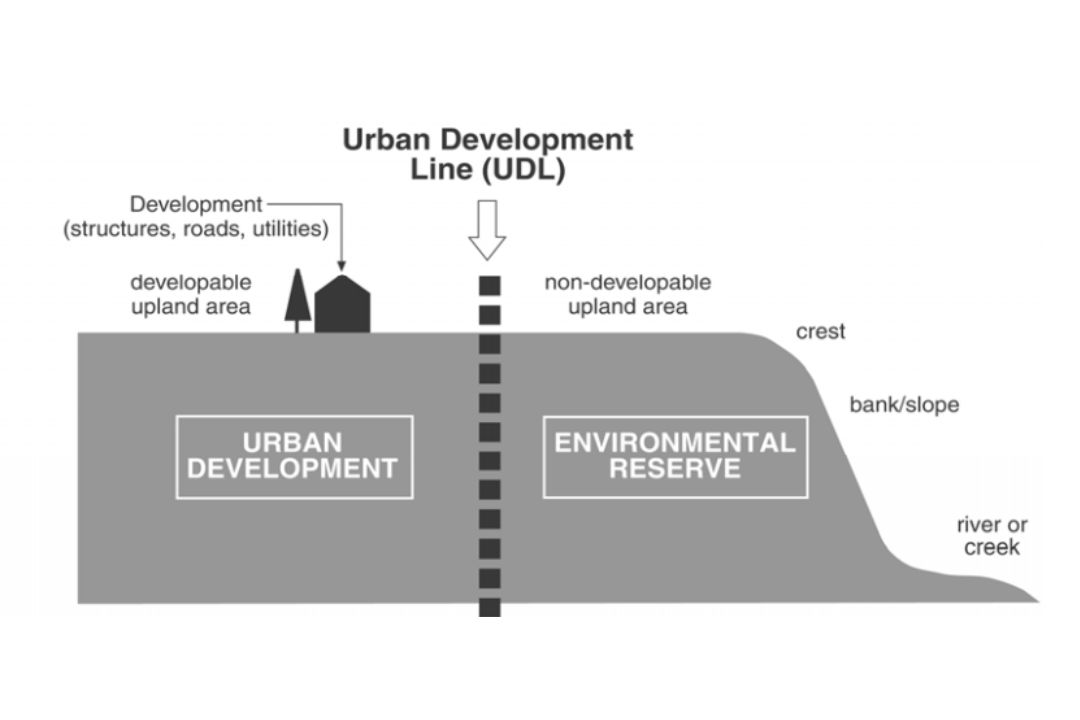A Nordic spa that city council recently approved breaks the city's own policies meant to enhance public access to the river valley, an advocate says.
"This is exactly the kind of private encroachment that the river valley bylaw and the top of bank policy were designed to prevent," Rocky Feroe, with the Edmonton River Valley Conservation Coalition, said.
Despite a common perception that the North Saskatchewan river valley is a public park for all to enjoy, the reality is that much of it is privately owned, Feroe said. About 40% of river valley land throughout the Edmonton region is private land, according to the River Valley Alliance.
In an effort to reverse the restrictions to public use that private ownership creates, in 2010 the city introduced the top of bank policy. Its aim is to allow people to walk continuously along the top of the bank of the river valley, regardless of developments that butt up against the valley. The policy is also meant to reduce liability for developments sliding down the river bank, like the homes that collapsed in Riverbend in 1999. The policy states that developments are to be separated from the bank of the river valley by at least 10 to 15 metres, and that the city is meant to acquire a portion of the property as an environmental reserve. The policy also states the city will work with property owners and developers of lands adjacent to or within the river valley to encourage them to donate all or a portion of the lands.
Feroe and city administrators referred to this policy in late February, when council discussed Scandinave Group's rezoning application to allow it to build a Nordic spa in the Brander Gardens neighbourhood. The discussion noted that most of the proposed spa development is above the top of bank, and that the applicant said all spa buildings will be on the upland portion of the property. Still, the private property extends down the bank. City council unanimously approved a decision (minus Mayor Amarjeet Sohi, who was absent) that will see the city honour one part of the policy, which prohibits development on the edge of the bank, but still allow the spa owners to maintain a fence that will cut off public access to the top of bank. A representative from Scandinave told council the company didn't want public access to the top of bank because the spa is meant to be silent and people walking nearby would disrupt "the intimacy, peace, and quiet."
Before council voted to approve, city staff said the slope is steep and a below-bank fence could help with safety. Staff also said the fence would prevent people from accessing the spa from the river valley, noting the spa will have expensive equipment.
Administration said it discussed acquiring top-of-bank lands from the applicant, but Scandinave didn't agree. It also said the city can't compel a landowner to sell the land to the city. Administration added that it supported the rezoning as a trade-off to further economic activity. It also said the direct control zoning that council approved has a restrictive covenant that prohibits development, other than the proposed fence, below bank.
The city and the University of Alberta Properties Trust, the current owner of the land, have an existing agreement to see the city purchase a 10-metre strip on the north side of the property for a footpath when the trust sells the land to Scandinave. That portion of land is not on the top of bank, but would create access to the public river valley land below bank.
Feroe said although this is just one property out of the 18,000 acres that make up the river valley, allowing one developer to encroach into the valley means others could follow. "This is not a good time to be not adhering to the policy, when so much is privately held," Feroe said. "You don't want every developer now saying, 'But you gave the spa a break, how about give us a break.'"
Representatives from the Confederacy of Treaty Six First Nations also opposed the rezoning application at the public hearing in February. The Confederacy opposed the application mainly because the development involves the private sale of river valley lands. Grand Chief Greg Desjarlais wrote in an open letter that the city should force the subdivision of top-of-bank land and protect public access to it. The city also failed in its duty to adequately consult and accommodate First Nations on city-led projects related to the river valley, Desjarlais wrote.

